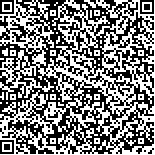|
|
|
| |
|
|
| 本文已被:浏览 823次 下载 590次 |

码上扫一扫! |
|
|
| 基于网络药理学的消岩汤治疗胃癌机制探讨 |
|
牛潇菲1, 张畅2, 李小江3,4
|
|
1.东营职业学院, 东营 257091;2.平煤神马集团总医院, 平顶山 467000;3.天津中医药大学第一附属医院, 天津 300381;4.国家中医针灸临床医学研究中心, 天津 300381
|
|
| 摘要: |
| [目的] 运用网络药理学探讨消岩汤治疗胃癌的作用机制。[方法] 通过TCMSP、TCMID和BATMAN-TCM数据库筛选消岩汤的活性成分及作用靶点,后利用Uniprot获取蛋白靶点所对应的基因名称;通过DrugBank、GeneCards、OMIM数据库挖掘胃癌疾病靶点,并筛选出与消岩汤靶点基因的交集基因;运用Cytoscape3.7.2软件绘制药物-化合物-交集靶点网络图;运用String数据分析平台构建PPI网络,并运用MCODE插件对PPI网络进行Cluster模块分析;运用Metascape数据库进行KEGG富集分析及GO富集分析;运用Kaplan-Meier Plotter数据库探索关键基因靶点对胃癌患者OS的影响,绘制生存曲线。[结果] 筛选得到消岩汤活性成分41种、靶点基因266个,胃癌靶基因1 163个,最终获得交集基因116个,剔除不含交集基因的活性成分后得到化合物35种。TP53、JUN、AKT1、MAPK3、RELA、MAPK1、ESR1、MAPK14、IL-6等为消岩汤治疗胃癌的关键靶点。GO富集分析结果显示与凋亡的信号通路、对无机物质的反应、对氧化应激的反应、对化学应激的反应等相关,KEGG通路富集分析结果显示主要涉及癌症中的蛋白多糖、PI3K-Akt信号通路、IL-17信号通路、TNF信号通路、铂类耐药等。生存分析结果显示TP53、AKT1、MAPK3、RELA、ESR1高表达的患者总生存期显著低于低表达组,JUN、MAPK1、MAPK14高表达患者的总生存期则显著高于低表达组。[结论] 基于网络药理学的研究方法有助于寻找消岩汤治疗胃癌的关键靶点及信号通路,为深入探索消岩汤治疗胃癌的作用机制提供了有益信息和数据支撑。 |
| 关键词: 网络药理学 消岩汤 胃癌 作用机制 |
| DOI:10.11656/j.issn.1673-9043.2023.06.14 |
| 分类号:R285 |
| 基金项目:天津市卫生健康委员会中医药重点领域科研项目(2020008)。 |
|
| Mechanism of Xiaoyan Decoction in treating gastric cancer based on network pharmacology |
|
NIU Xiaofei1, ZHANG Chang2, LI Xiaojiang3,4
|
|
1.Dongying Vocational Institute, Dongying 257091, China;2.General Hospital of Pingmei Shenma Group, Pingdingshan 467000, China;3.First Teaching Hospital of Tianjin University of Traditional Chinese Medicine, Tianjin 300381, China;4.National Clinical Research Center for Chinese Medicine Acupuncture and Moxibustion, Tianjin 300381, China
|
| Abstract: |
| [Objective] To explore the mechanism of Xiaoyan Decoction in the treatment of gastric cancer by network pharmacology.[Methods] TCMSP、TCMID and BATMAN-TCM database was used to screen the active ingredients and targets of Xiaoyan Decoction,and UniProt was used to obtain the corresponding gene names of protein targets;the gastric cancer disease targets were mined through DrugBank,GeneCardsand OMIM database,and the intersection genes with Xiaoyan Decoction target genes were screened;the drug compound intersection target network was drawn by using Cytoscape 3.7.2 software;the String number was used to calculate the sequence the PPI network was constructed according to the analysis platform,and the MCODE plug-in was used for cluster module analysis of PPI network;the Metascape database was used for KEGG enrichment analysis and GO enrichment analysis;the Kaplan-Meier Plotter database was used to explore the impact of key gene targets on OS of gastric cancer patients,and the survival curve was drawn.[Results] 41 active components,266 target genes,1 163 gastric cancer target genes and 116 cross genes were obtained,and 35 compounds were obtained after eliminating the active components without cross genes. TP53,JUN,AKT1,MAPK3,RELA,MAPK1,ESR1,MAPK14 and IL-6 are the key targets of Xiaoyan Decoction in the treatment of gastric cancer. The results of GO enrichment analysis showed that it was related to the signal pathway of apoptosis,response to inorganic substances,response to oxidative stress and response to chemical stress. The results of KEGG pathway enrichment analysis showed that it was mainly related to proteoglycan,PI3K-Akt signal pathway,IL-17 signal pathway,TNF signal pathway and platinum resistance in cancer. Survival analysis showed that the overall survival of patients with high expression of TP53,AKT1,MAPK3,RELA and ESR1 was significantly lower than that of low expression group,while the overall survival of patients with high expression of JUN,MAPK1 and MAPK14 was significantly higher than that of low expression group.[Conclusion] The research methods based on network pharmacology can help to find the key targets and signal pathways of Xiaoyan Decoction in the treatment of gastric cancer,and provide useful information and data support for further exploring the mechanism of Xiaoyan Decoction in the treatment of gastric cancer. |
| Key words: network pharmacology Xiaoyan Decoction gastric cancer mechanism |
|
|
|
|
